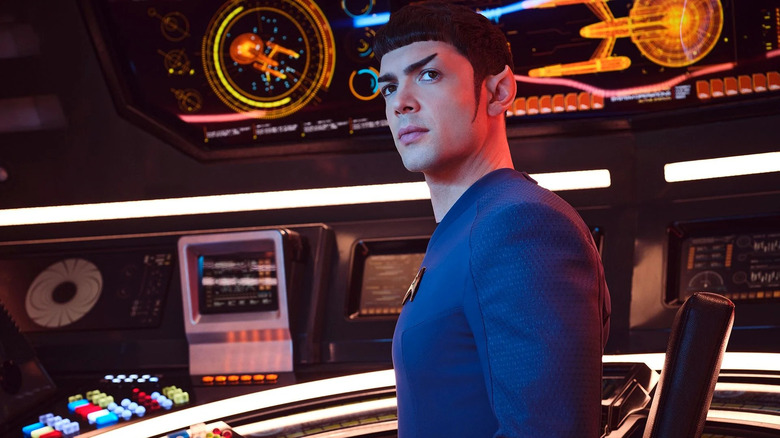
There are particular critical adages about "Star Trek" shows that have become just as much a part of Trek lore as the Klingon language or the technical details of a matter/antimatter reaction chamber. For example, it has widely been repeated that the odd-numbered Trek movies ("The Motion Picture," "The Search for Spock," "The Final Frontier," "Generations," "Insurrection") are simply not as good -- or are at least not as successful -- as the even-numbered ones ("The Wrath of Khan," "The Voyage Home," "The Undiscovered Country," "First Contact"). That particular pattern, incidentally, was broken by the 2002 film "Star Trek: Nemesis," an even-numbered film that wasn't a hit, nor was it well-received.
Another Trek truism is that no "Star Trek" TV series starts at its strongest. "Star Trek," especially some 56 years after its inception, has built up a massively complicated mythos, complete with inner cultures, personal histories, alternate timelines, and fleets of starships for Trekkies to keep track of. As such, it typically takes an average Trek showrunner to work through a lot of continuity kinks, character fineries, and bad story ideas before hitting their stride. Indeed, "Star Trek" pilots are have been pretty shabby overall, often containing conceits, tonal decisions, or even characters that would be abandoned or altered as time passed. "Star Trek" is perhaps the prime exemplar of the oft-flung critical advice "You can skip the first season."
The following ranking will run down every single "Star Trek" TV pilot -- there will be 12 proper pilot episodes once "Strange New Worlds" premieres this week -- and rank them based on their own merits as singular stories, and how well they established the particular Trek show they led.
This is not a ranking of the shows themselves, but just their pilots. A great show can have an awful pilot and vice versa. Additionally, this list has deliberately left off "Short Treks," as those free-floating short films were made on the sets of shows in progress, presented as adjunct pieces; they were not establishing a new universe the same way a pilot does.
12. Remembrance
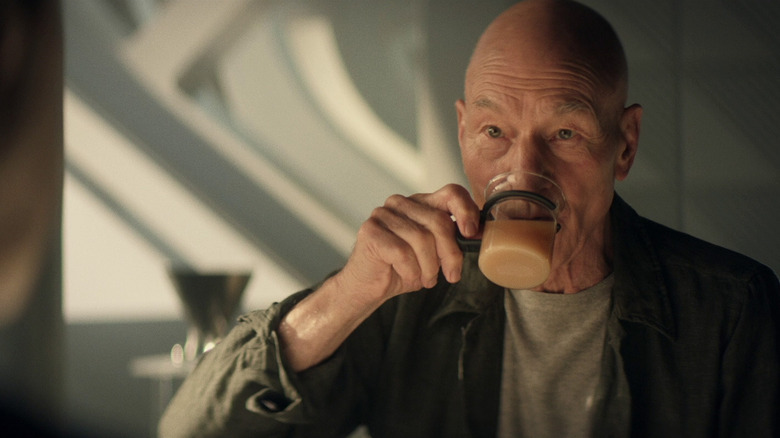
The pilot of "Star Trek: Picard" is sloppy from the first shot: In a dream sequence, the Enterprise-D (destroyed some years earlier in "Star Trek: Generations") soars toward the camera. The camera zooms into a window on the starboard side of the ship's saucer section, through the window, and into ... Ten Forward, the officer's lounge on the ship. Ten Forward is called such because it is on deck 10, forward. Right in the middle of the ship. It is not off to the starboard side. Trekkies who watched "Star Trek: The Next Generation" -- the series from which "Picard" was spun -- would know the location of Ten Forward.
This kind of small error could easily be overlooked if "Star Trek: Picard" went on to present an interesting premise, a good story, or a Trek wrinkle not seen before. Instead, audiences are presented with a Jean-Luc Picard (Patrick Stewart) facing a Federation that had become xenophobic and irresponsible (they refused to help the Romulan Star Empire during a crisis), and a bizarre, nonsensical story about cloning Data using a single positronic neuron (!), an insane conspiracy, murderous and/or alcoholic characters, and a mystery not interesting enough to want to delve into. "Remembrance" seems eager to present a Trek show that is so unlike what we are used to, that it hardly feels like a Trek show anymore.
11. The Vulcan Hello
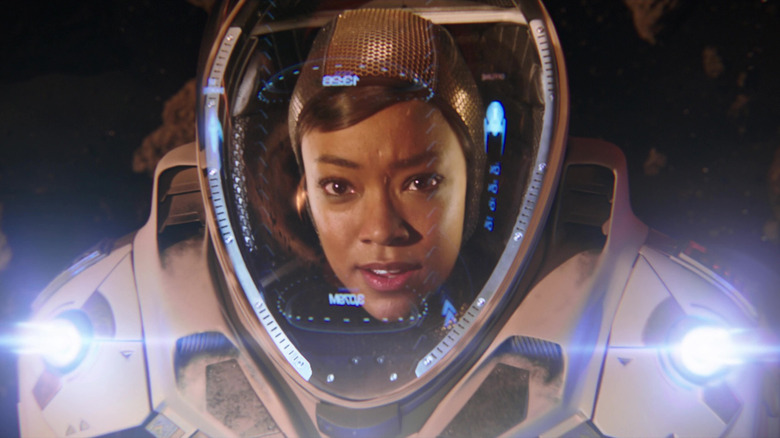
"Star Trek: Discovery" had a lot to prove. When it debuted on CBS All Access in 2017, it was the first "Star Trek" show since the cancelation of "Enterprise" in 2005. Initially envisioned by show co-creator Bryan Fuller as a multi-year story that would span Trek history from a period prior to the original series all the way into the distant future, "Discovery" was ambitious and expansive. As production grinded on, however, a lot of writing and premises were changed, and the final show emerged as a slick, well-moneyed, ostensibly daring "This ain't your dad's 'Star Trek'" artistic drill. The main character (Michael Burnham, played by Sonequa Martin-Green), for one, would not be a captain, but a lesser officer. Although set before the 1966 show, there would be high-tech special effects to outstrip anything previously seen, including a starship that can teleport anywhere in the galaxy. The Klingons would be completely redesigned. And, perhaps most controversially, there would be far more violence, sex, cussing, and catastrophe than ever before, as this Trek was set during wartime.
Old world Trekkies, even those with an open mind, were dismayed when "The Vulcan Hello" premiered. There was no sense of exploration, no optimism, nothing that felt at all like "Star Trek," even in the slightest. Yes, this was the show's mission statement, but perhaps the showrunners were too successful. What's more, the pilot left the lead character adrift, having lost her ship and being demoted following a bizarre refusal to communicate with her captain. This led to a show that didn't seem to have a premise. It was just one bloody thing after another. What was the goal of the U.S.S. Discovery? Who was Michael Burnham besides someone who makes bad decisions? Were there any diplomats on board?
"Discovery" managed to stagger to its feet eventually, finding a more interesting premise in its third season (when the ship was thrown nearly a millennium into the future), but it's still not walking with confidence.
10. Lost And Found
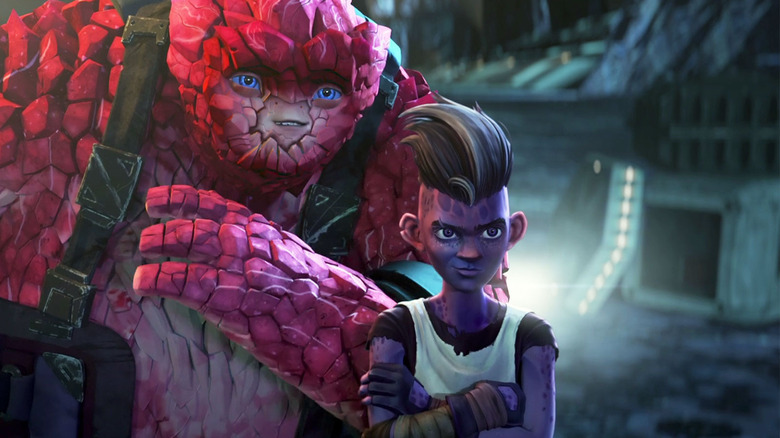
"Star Trek: Prodigy" may be the most daring and unusual of all the Trek shows. Produced by Nickelodeon, "Prodigy" is an animated show about a disparate group of teenage aliens enslaved in a coal mine that is overseen by, essentially, Emperor Palpatine from the "Star Wars" movies. The time and location are unknown. When the teens escape, they happen upon an abandoned Starfleet vessel called the U.S.S. Protostar. The ship is equipped with an instructional hologram that looks and sounds like Capt. Janeway (Kate Mulgrew) from "Star Trek: Voyager."
The premise is pretty clever, and the mystery of when and where the show takes place is intriguing, but ... it's far too slow-going. Some of the plot details listed above are not revealed in "Lost and Found" by itself, and the actual mysteries of the show take a while to be revealed, much less solved. What's more, the design of the characters is more reminiscent of a generic sci-fi board game than anything related to Trek. Overall, "Star Trek" is a franchise devoted to workplace drama, management, and diplomacy. When it takes a long time for the main characters to arrive at the workplace, you're taking too much time. The events of the entire show to date should have been encapsulated in the pilot.
9. Second Contact
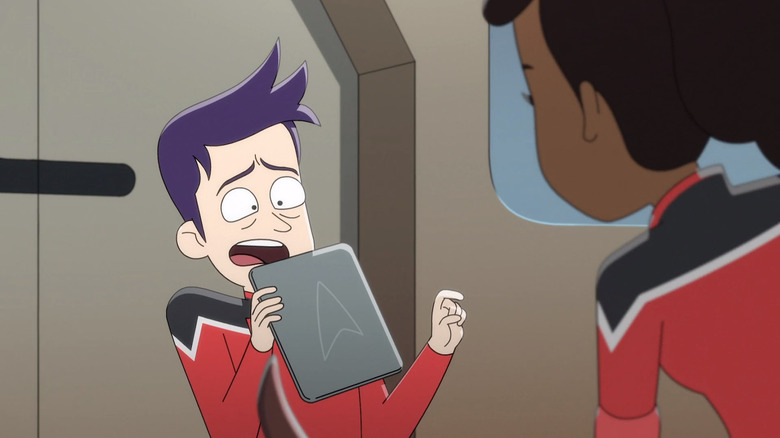
2020's "Star Trek: Lower Decks," named after an episode of "Star Trek: The Next Generation" takes place immediately after the events of "Star Trek: Nemesis," and lowers viewers into a reference-heavy playground of crass humor and workaday struggle as seen from the viewpoint of the lowest-ranking officers on a starship. The premise is great, as -- with Trek being a workplace drama -- viewers rarely get to see the dull gruntwork that a starship would likely require. "Lower Decks" came to understand how Trek is supposed to work far better than "Discovery" and Picard" before it.
But, wow, that pilot was bad. "Second Contact" does a great job of establishing the place of "Lower Decks," but panics when it comes to the characters. As such, every joke is too crass for its own good, each character is broad and awful, and no scene is funny. The pilot made "Lower Decks" look like a pale imitation of "Solar Opposites," or an animated knockoff of "The Orville." Luckily for Trekkies, "Lower Decks" ably hit its stride as early as episode three.
8. Where No Man Has Gone Before
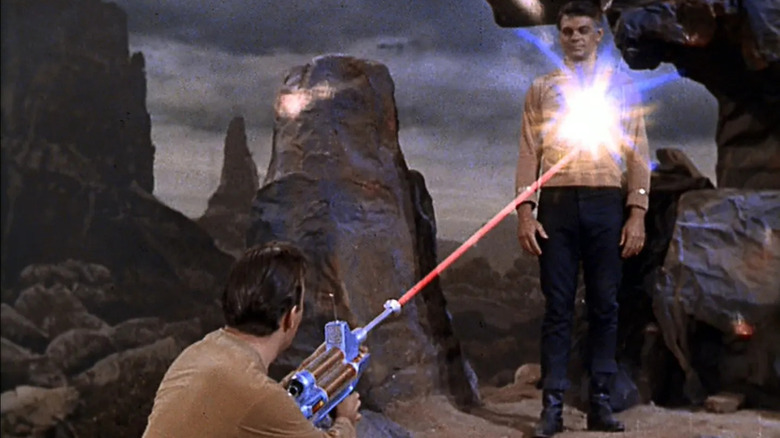
The first episode (in production order) of "Star Trek: The Original Series" to feature William Shatner as Captain Kirk, "Where No Man Has Gone Before" (1966) does a fine job of establishing a new cast of characters, and doesn't have to establish the setting or the U.S.S. Enterprise as the show's unused pilot, "The Cage," did that already. Audiences got to know Kirk, Spock, Uhura, McCoy, Scotty, and Sulu with aplomb. This was the future, everyone worked together, and bold, Horatio Hornblower types were boldly taking technological marvels into space not for the purposes of conquest, but for explorative and diplomatic purposes. All of this was brilliant, and those notions have stayed with Trek ever since.
It would have been nice, however, if the story of "Where No Man Has Gone Before" focused more on the regular cast, and not on two characters that wouldn't be seen in any future episodes. In "No Man," Gary Lockwood plays a man who crosses the outer edge of the galaxy and mysteriously gains godlike superpowers. Sally Kellerman, soon thereafter, also gains powers. Kirk ultimately has to kill Gary in a rockslide.
The interesting thematic material is given to a supporting character in "No Man." This is a fine conceit for a Trek story, of course, but it would take multiple episodes of the show after "No Man" to really delve into some of the more basic aspects of "Star Trek." Indeed, it would take at least partway through the first season before "Star Trek" became more solidly science-fiction, and eschewed a more sensationalistic monster-of-the-week horror show premise.
7. Caretaker
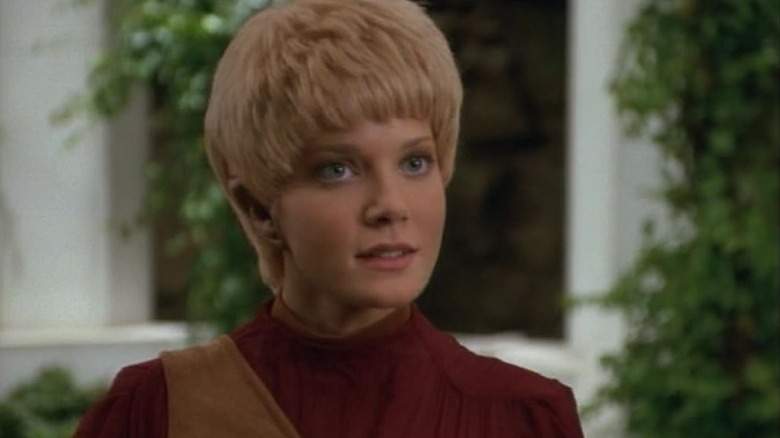
1995 was a glorious time for "Star Trek." "Next Generation" wrapped its successful seven-year run and debuted a movie, "Deep Space Nine" was gaining traction, and a new show, "Star Trek: Voyager" was the flagship program on a brand new network, the UPN. "Voyager," within the chronology of Trek, was to be the third show in a row to take place within the 24th century, so audiences were already comfortable with the setting. What "Voyager" needed was an interesting premise. And the premise was good enough: What if "Star Trek," but "Lost in Space"? The titular Starfleet vessel was to be thrown clear across the galaxy by a powerful god alien, and would need to travel for over 70 years to make it back to Earth. Can a ship retain the ideals of Starfeel with no backup, and with dwindling resources?
Establishing the premise wasn't the issue with "Caretaker," nor was developing characters. The problem was the story. The Caretaker, the god alien, barely registers as something awe-inspiring, and the new villains, The Kazon, are hardly threatening. There is no sense that these aliens are any more remote than any other aliens seen on "Star Trek." There is no sense that our heroes are out of their element.
Longterm viewers of "Voyager" will note that The Kazon, the Maquis, and other elements introduced early in the show were quickly abandoned.
6. Encounter At Farpoint
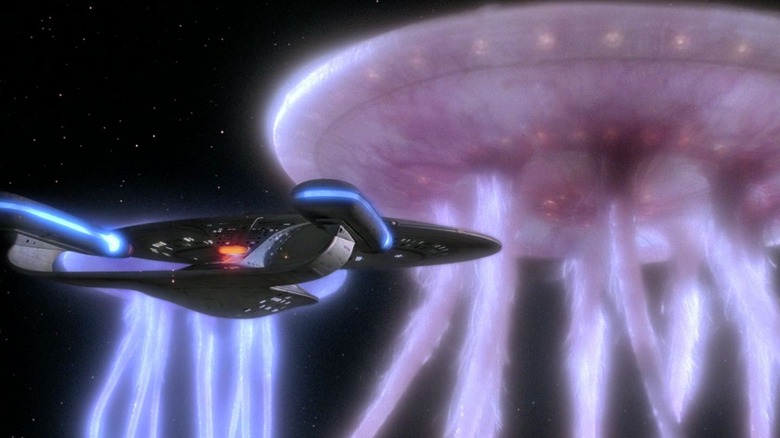
Like "Discovery," "Star Trek: The Next Generation" had a lot to live up to. Over the 1970s, the original "Star Trek" grew in popularity thanks to syndication, and Gene Roddenberry's speaking engagements at Trek conventions. "Star Trek" movies began coming out on the regular starting in 1979, and by NextGen's debut in 1987, there were four hit films behind it. Roddenberry, meanwhile, felt that this was the time to get "Star Trek" right. NextGen was meant to depict and even more optimistic future than the 1966 series. A more intellectual, more diplomatic, more multicultural future.
"Encounter at Farpoint" lays down the new Trek world remarkably well. The new Enterprise looks great and feels like an inhabitable place. Additionally, it does a good job with its characters, giving each one a moment to express themselves. It's the setting and the characters that kept viewers returning through an otherwise lackluster first season. Picard (Patrick Stewart), Data (Brent Spiner), and all the rest immediately emerge as complete beings -- this isn't a show that required nostalgia or familiarity with "Star Trek" to function. This show was its own animal. And it showed nothing but promise.
Like "Caretaker," though "Encounter at Farpoint" lags in story. The crisis at the center of the episode -- a faraway outpost is being bombarded by a mysterious flying saucer -- isn't as epic as the god alien Q (John De Lanice) makes it out to be.
5. Emissary
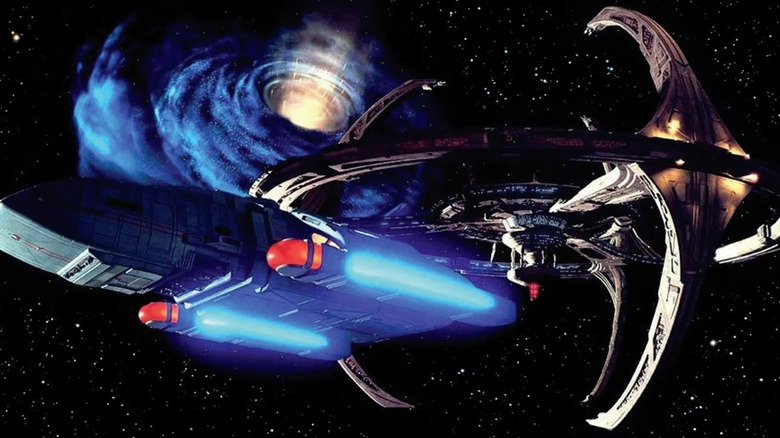
"Star Trek: Deep Space Nine" has undergone a major reappraisal in the 20-odd years since its end, often touted as the best of all Trek shows. While "Deep Space Nine" is undeniably terrific, it stands out when placed next to "Next Generation," the one complementing the other. Taken as a unit, NextGen and DS9 present an excellent point/counterpoint in Trekdom.
"Deep Space Nine," like "Voyager" and "Next Generation," expertly introduces a cast of characters, this one even stranger and more diverse than the other shows (Rage captain, Randian gremlin, liquid grumpy cop, former freedom fighter, bisexual tailor lizard, old-man-in-a-young-woman's-body, space Karen, Irish man!). Additionally, "Deep Space Nine" is set on a space station where the idealism of Starfleet is no longer a given, leading to greater levels of conflict not possible in other Trek shows.
Also, "Emissary" presents a great third act of classic Trek philosophy. Benjamin Sisko (Avery Brooks) finds himself lodged in a cosmic space hole, having a conversation with noncorporeal aliens about the definition and the nature of time. Time is linear! Only it's not, when memory becomes involved! "Deep Space Nine" also ultimately had a rocky first few seasons, but one cannot fault "Emissary." It was a pilot that really grabbed you.
4. Broken Bow
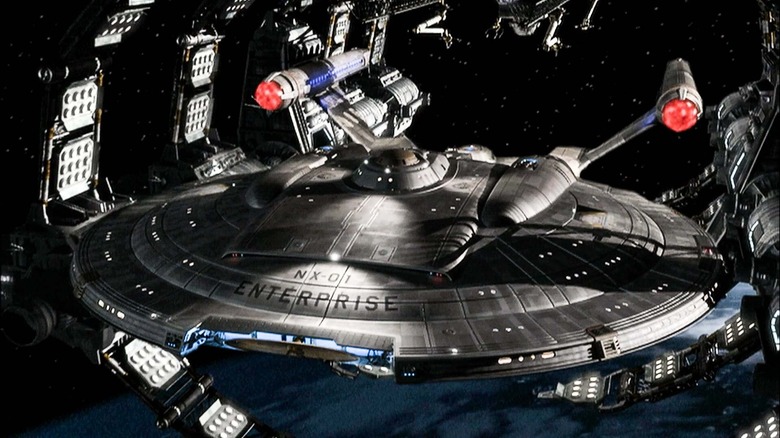
"Enterprise," later "Star Trek: Enterprise," came after "Voyager" came to a close, and -- perhaps daringly -- shifts the time frame to a previous century in Trek history wherein the very first Earth vessel, the U.S.S. Enterprise NX-01, is heading out into space for the first time. No shields, no human-safe transporters, no tractor beams, and no Prime Directive. This was to be a true frontier-themed show.
"Broken Bow" takes place largely on Earth as well as in space, and has to pull triple duty with characters, workplace, and time frame. "Deep Space Nine" and "Voyager" could coast on pre-established notions set up in NextGen, so this was the first time in nearly 15 years that Trek had to set up its own history again. "Broken Bow," with an original aesthetic, a new tone, and a completely different pace and feel, rode the line between Trek and NASA, feeling like a visit to an Air & Space Museum, only in "Star Trek." While many of the characters tilt lazily into archetype from time to time, and some of the supporting players never really get a chance to shine (poor, poor Mayweather, played by Anthony Montgomery), many of them were bursting with life and character; Dr. Phlox (John Billingsley) remains of the best of all Trek characters.
3. The Cage
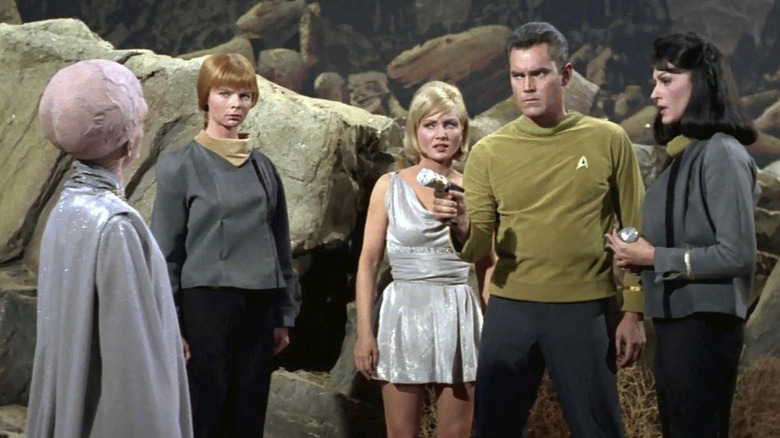
A careful eye might be able to understand why "The Cage" -- the unused "Star Trek" pilot made in 1966, but not aired in its entirety until the '80s -- wasn't ultimately used as the basis for the show. "The Cage" is aggressive and scary. The central character, Captain Pike (Jeffrey Hunter) is an angry, suspicious character, not possessed of the resolute heroism that would become a hallmark of Starfleet captains. "The Cage" was also, as mentioned above, definitely more in the horror vein than sci-fi. The premise -- psychic kidnappers hold Pike captive in a cell and test him with illusions -- would not have been out of place on "The Twilight Zone."
While the characters from "The Cage" were all abandoned, with the exception of Spock (Leonard Nimoy), the setting and the timeframe remained. The eventual second pilot would lean in harder on the optimism and the heroism, the show's eventual overall themes.
"The Cage," however, is an amazing little horror film unto itself. It's eerie and weird. Space is a scary place, "The Cage" posits. And, because Trekkies are sticklers for canon, "The Cage" was eventually folded into extant Trek lore, with Pike serving as the Enterprise's captain prior to Kirk. "The Cage" was so strong with characters and tone, that it would eventually serve as the pilot for "Star Trek: Strange New Worlds" as well!
2. Beyond The Farthest Star
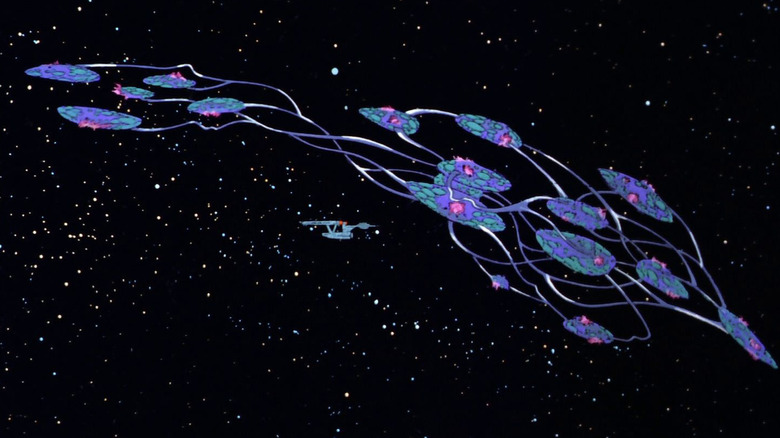
If Trek shows notoriously begin weakly, "Star Trek: The Animated Series" from 1973 is a bold exception. "The Animated Series" merely ported the characters and setting from "Star Trek" into a new medium, retaining most of the original cast (Walter Koenig did not appear), following the Enterprise on the final two years of its original five-year mission (the original show only lasted three years). In condensing the show to a half-hour format, "Star Trek" became surprisingly stronger, cutting out a lot of chaff and getting straight to the story.
The animated medium also allows for wilder aliens and planets and settings that a live-action budget previously forbade. This is a show with 50-foot Spocks, aliens made of plant material, bird people, cat people, underwater episodes, and, in the case of "Beyond the Farthest Star," enormous, unusual ships that barely fit into the imagination. In the pilot, the Enterprise encounters a craft so impossibly ancient, the crew has trouble determining its age. Without having to build a set, the ship could finally take up the imagination in ways the original show never could.
"Star Trek: The Animated Series" is considered only partly canonical by Trekkies ("Star Trek V" would directly contradict an episode), but in terms of storytelling, it exceeds the original.
1. Strange New Worlds
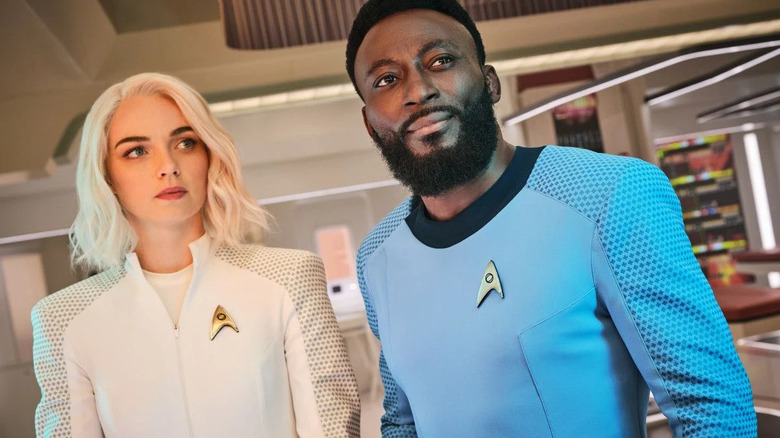
While the occupation of "Strange New Worlds" at the top of this list may be driven by the thrill of novelty -- or could perhaps be inspired by a series of bad pilots from the more recent Trek shows -- it must be acknowledged that the latest pilot, set to debut on Paramount+ this week, is one of the most solid the franchise has seen.
"Strange New Worlds" does have several advantages over its predecessors, of course. Not only does it draw most of its characters from "The Cage" and other Trek sources -- it is 110% a legacy program -- but it introduces a lot of its current canon in the second season of "Star Trek: Discovery." There was a lot of test driving done before "Strange New Worlds" was allowed to fly on its own. That test driving, however, seems to have allowed the showrunners the confidence and the relaxation to let the show breath, walk, explore. This is not a show based on mayhem or frustrating puzzle boxes. This is a true return to form.
And it's not forced! There are no scenes wherein a character turns to the camera, say the f word, and declare how much they love math. No more lip service, no more quests to be different. Just classic Trek, starting strong. What a relief.
Read this next: Every Star Trek Show And Movie In Chronological Order
The post Every Star Trek TV Show Premiere Ranked (Including Strange New Worlds) appeared first on /Film.
